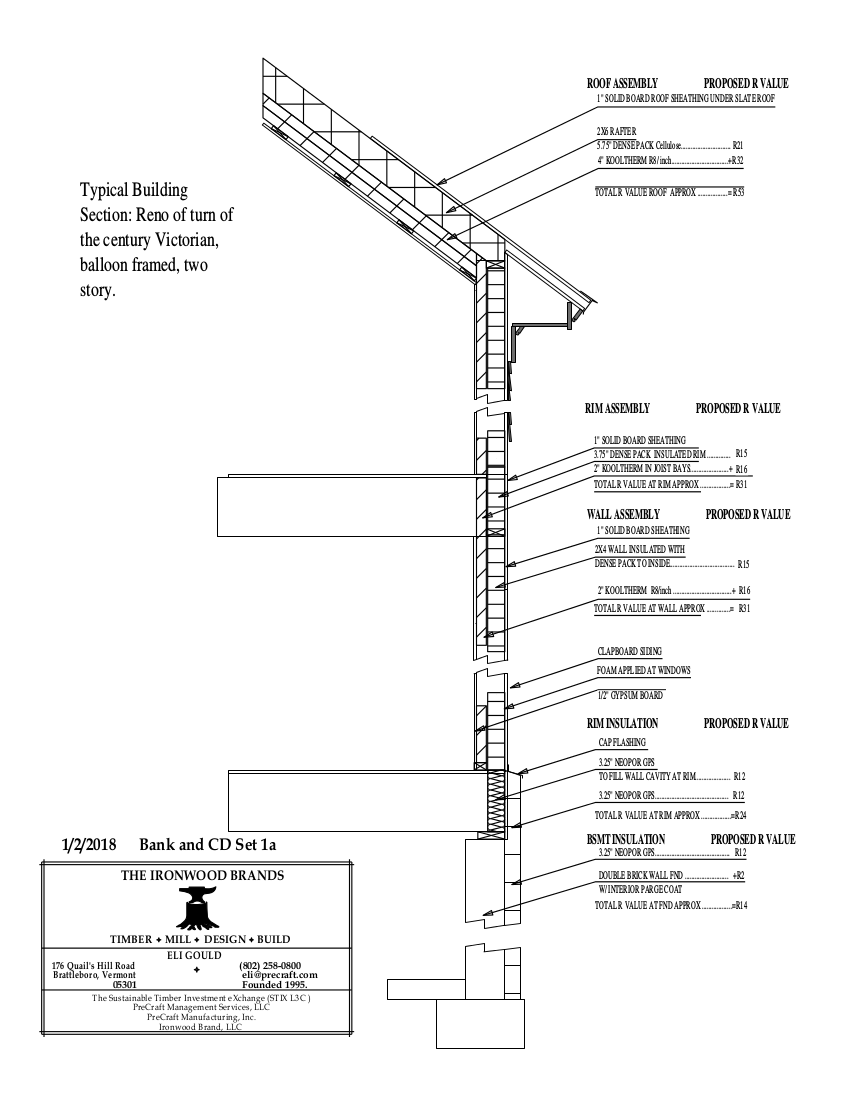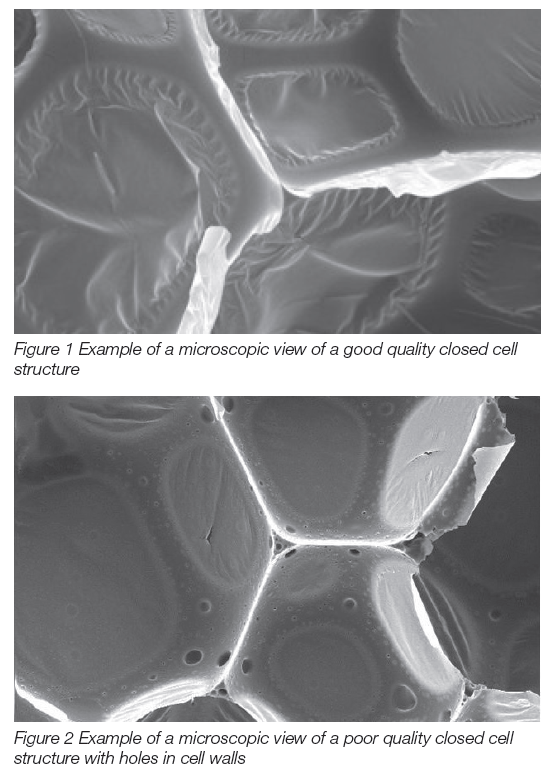A type of rigid foam insulation called Kingspan Kooltherm was installed as part of the energy retrofit work at this house in Brattleboro, Vermont. The house has a slate roof.
Photo: Peter Yost
The existing roof assembly was pretty typical, until the R-value was beefed up to R-53. The interior Kooltherm contributes R-32, and the dense-packed cellulose contributes R-21.
Image #2: Eli Gould, PreCraft
These micrographs show the unique shape and quality of the closed cell structure of Kooltherm
Image #3: KingspanWorkers are insulating the second floor and attic at 81 Chapin Street with Kooltherm. There are two layers on the interior of the roof slopes and one layer on the walls. Seams are taped for airtightness.
Photo: Peter YostThe Kootherm insulation in the attic space can be left exposed, since according to code authorities, the insulation qualifies as an ignition barrier.
Peter YostNote that large gaps in the wall sheathing have been air-sealed with spray foam before the Kooltherm rigid insulation was installed on the interior of the walls.
Photo: Peter YostAfter the first layer of Kooltherm was installed, a worker from American Installations uses the company's innovative cellulose installation system to achieve a dense installation of cellulose in the roof framing cavities. This process will be the topic of the next blog on the 81 Chapin Street deep energy retrofit.
Photo: Peter Yost